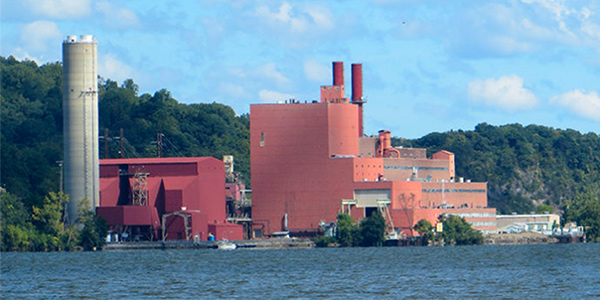New York residents calling into virtual public hearings Wednesday overwhelmingly opposed rebuilding the 532-MW gas-fired Danskammer peaker plant as a 600-MW combined cycle unit (18-F-0325).
State Assemblymember Robert Carroll (D) said the state has just 19 years to transition to an emissions-free grid, and that the Danskammer power plant is a significant obstacle to doing so.
“With New York having some of the boldest climate leadership legislation in the nation, it would be a shame for you to approve the Danskammer power plant [to emit] 25 times more health-damaging particulate matter and volatile compounds into the atmosphere, increasing air pollution and threatening public health,” Carroll told the New York State Board on Electric Generation Siting and the Environment, which held the hearings.
The facility on the west bank of the Hudson River in Newburgh also applied for limited provisions to burn ultra-low sulfur diesel fuel as a backup fuel, with five days of on-site fuel oil storage, the Siting Board said. Danskammer Energy filed the original application in December 2019 and made four supplemental filings in 2020.
New York’s Climate Leadership and Community Protection Act mandates that greenhouse gas emissions be reduced to 40% from 1990 levels by 2030 and 85% by 2050. (See NY Preps Statewide GHG Emissions Report.)
Health, Reliability
Christine Arroyo, a resident of Putnam County, across the Hudson River and south of Newburgh, said she and her husband moved from Brooklyn to start a family and chose not to live in Newburgh because of the pollution from the power plant.
“Besides all the health problems [Danskammer] brings to us who are already here, it also greatly contributes to miscarriages,” Arroyo said. “We have the privilege of being able to choose where to live, but think of all the people who don’t and whose lives and health conditions are worse because of it.”
The state Department of Health submitted a supplementary environmental justice analysis, concluding that “the project will meet and exceed the recommendations” from the department to mitigate any potential environmental burden to the nearby impact study area and, more specifically, environmental justice areas.
“This is because the project proposes to use the cleanest fuels presently available, which include natural gas as the primary fuel, with ULSD as the backup fuel; [and] the project will also be one of the most efficient electric-generating facilities in New York, which further reduces the NYISO systemwide average emission rate per megawatt-hour generated,” the department said.
Under its air permits, the project would incorporate technology to minimize emissions and offset emissions of nitrogen oxides and volatile organic compounds through emission-reduction credits based on the shutdown of the existing Danskammer generating station. The mitigation measures will ensure that the project “has negligible to no air quality impacts” from its operation, the DOH said.
Chloe Holden, an energy storage researcher for Wood McKenzie, shared a quote by Bill Reid, CEO of Agate Power, which owns Danskammer.
“This quote really shocked me because it contradicts all recent market analysis on the topic of gas-fired power plants. In November 2019, Reid stated, ‘We need gas-powered generation until renewables can step in, and I can’t tell you whether that’s in 10 years or 30 years,’” Holden said.
Holden said Reid’s statement is “extremely misleading” and that “several natural gas-fired power plants are being moved forward based on this kind of outdated information. I am qualified to say that the argument for this plant is highly disingenuous. Danskammer’s message to the public and to regulators is that their plant is one of the last fossil fuel plants that will ever be built in the U.S., but the reality is that this plant is not needed for reliability.”
For several years the data have shown that solar energy, paired with lithium-ion battery storage power generation, can be used cost-effectively instead of gas-fired power plants, Holden said. Solar paired with storage is already being installed instead of gas-fired plants all across the U.S., she said.





